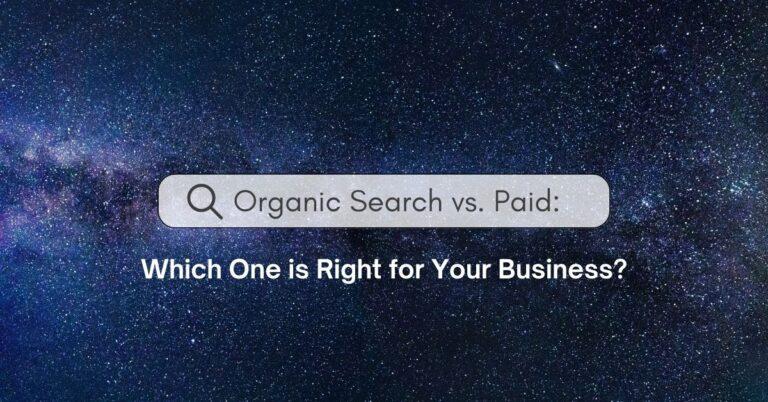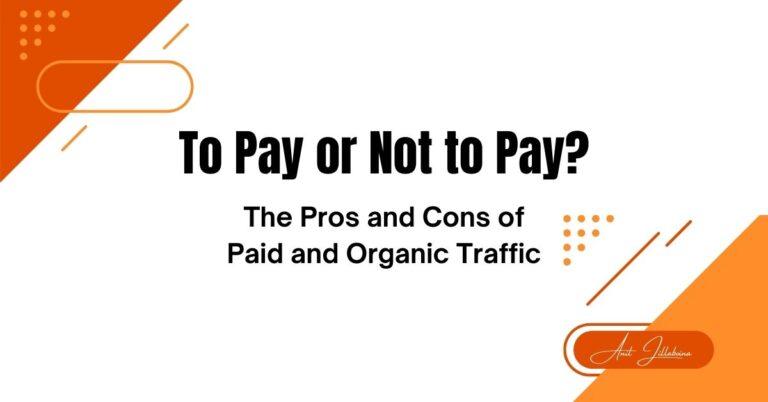Introduction:
In today’s digital world, where competition is fierce, businesses need effective marketing strategies to stand out and reach their target audience. That’s where paid advertising comes in. Paid advertising allows you to promote your products and services through various platforms, ensuring that your message reaches the right people at the right time. However, for beginners, understanding the fundamentals and best practices of paid advertising can be overwhelming. In this beginner’s guide, we will explore the power of paid advertising and provide you with actionable tips and strategies for success.
Understanding the Basics of Paid Advertising:
Defining paid advertising
Paid advertising refers to the practice of paying to promote your products, services, or brand through various digital platforms. It encompasses different forms such as search ads, display ads, social media ads, and more. Unlike organic marketing methods, paid advertising allows you to reach a wider audience quickly and effectively by targeting specific demographics and interests.
Key components of paid advertising
Successful paid advertising campaigns rely on a few essential components:
Target audience identification: Defining your target audience is crucial for effective ad targeting. By understanding who your ideal customers are, you can tailor your ads to reach the right people.
Ad platforms: Popular advertising platforms like Google Ads, Facebook Ads, and Instagram Ads provide a variety of features and targeting options. Familiarize yourself with these platforms to leverage their capabilities.
Budgeting and bidding: Setting a budget and bidding strategy is important to optimize your advertisements. Determine how much you are willing to spend and choose the appropriate bidding options based on your specific campaign goals.
Setting Goals and Crafting Effective Ad Campaigns:
Before launching any paid advertising campaign, it is essential to set clear goals. Different businesses may have different advertising objectives, including:
– Building brand awareness
– Generating leads
– Increasing sales
– Driving website traffic
Setting goals will help you shape your entire campaign strategy and measure success along the way.
Creating compelling ad content
Now that you understand your goals, it’s time to create ad content that grabs attention and engages your target audience. Consider the following tips:
Impactful visuals: Use eye-catching images and videos that align with your brand and resonate with your target audience.
Strong headlines: Craft compelling headlines that capture the essence of your offer and entice users to learn more.
Persuasive copywriting: Write concise and persuasive ad copy that clearly communicates the value proposition and encourages users to take action.
A/B testing: Experiment with different ad variations to identify what resonates best with your audience. Test different visuals, headlines, and calls-to-action to optimize your campaign performance.
Optimizing Paid Advertising Campaigns:
Once your ads are up and running, it’s important to monitor their performance to identify areas for improvement. Tracking tools and metrics allow you to assess key performance indicators such as click-through rates, conversion rates, and return-on-investment. Use this data to make data-driven decisions and optimize your campaigns accordingly.
Ad optimization techniques
There are several strategies you can employ to optimize your paid advertising campaigns:
Refining audience segments: Continuously analyze your target audience’s behavior and demographics. Refine your audience segments to improve targeting and increase your chances of reaching the right people.
Remarketing: Reach potential customers who have previously shown interest in your products or services by utilizing remarketing techniques. Tailor your ads specifically for these users to drive conversions.
Ad scheduling: Experiment with different ad scheduling options to identify the most effective times and days to display your ads. This will help maximize reach and engagement.
Budget allocation: Regularly review and adjust your budget allocation based on the performance of different campaigns. Focus on areas that drive the best results and reallocate resources accordingly.
Challenges and Pitfalls of Paid Advertising: How to Overcome Them
One common concern when it comes to paid advertising is limited budget availability. However, there are strategies to maximize the effectiveness of your campaigns within budget constraints:
– Focus on specific target audiences and niche markets to reduce competition and optimize your ad spend.
– Monitor and adjust your campaign settings regularly to ensure you are getting the most value for your money.
– Utilize cost-effective platforms and ad formats that align with your budget.
Ad fatigue and audience reception
As users are exposed to a vast amount of ads daily, it’s important to avoid ad fatigue and maintain your audience’s interest. Here are some strategies to keep your ads fresh and engaging:
– Regularly update ad visuals and copy to catch the attention of viewers.
– Test different ad variations to determine which ones resonate best with your audience.
– Utilize ad sequencing to tell a compelling story over multiple ad placements.
Conclusion
Paid advertising has the power to propel your business forward by reaching your target audience effectively. By understanding the basics, setting clear goals, crafting compelling ad campaigns, and optimizing their performance, you can leverage the potential of paid advertising to achieve success. Remember to continuously monitor and adapt your strategies based on data and customer feedback. With dedication and the right techniques, you can unlock the full potential of paid advertising and drive your business towards growth and prosperity.
Thank you for reading! Share your experiences and questions in the comments below!




